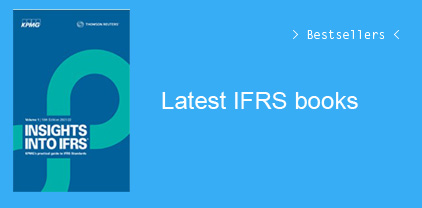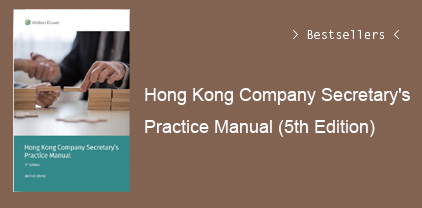1 Nature, Conduct, and Regulation of the Business .01-.113
General Nature of the Business .01-.03
Kinds of Insurance .04-.08
Legal Forms of Organization .09
Methods of Producing Business .10-.17
Major Transaction Cycles .18-.41
Underwriting of Risks .18-.27
Pooling, Captives, and Syndicates .28-.30
Processing and Payment of Claims .31-.32
Investments .33-.36
Definition of Public Business Entity .37-.41
Revenue Recognition .42
Accounting Practices .43-.113
State Insurance Regulation .43-.51
National Association of Insurance Commissioners .52-.53
Federal Regulation — Securities and Exchange Commission .54-.59
Federal Regulation — The Dodd-Frank Wall Street Reform and Consumer Protection Act .60-.70
Federal Regulation — Terrorism .71-.75
Industry Associations .76Additional Guidance When
Statutory Accounting Practices .77-.104
Generally Accepted Accounting Principles .105-.112
Comparison of SAP and GAAP .113
2 Audit Considerations .01-.178
Introduction .01
Scope of the Audit Engagement .02-.05
General Considerations .02-.04
Integrated Audit of Financial Statements and Internal Control Over Financial Reporting .05
Planning and Other Auditing Considerations .06-.65
Audit Planning .07-.08
Audit Risk .09-.13
Risk Assessment Procedures .14-.19
Understanding the Entity, Its Environment, and Its Internal Control .20-.39
Common Industry Ratios and Performance Metrics .40-.52
Identifying and Assessing the Risks of Material Misstatement .53-.56
Performing Audit Procedures in Response to Assessed Risks .57-.63
Use of Assertions in Obtaining Audit Evidence .64-.65
Other Risk Assessment Activities and Considerations .66-.70
Planning Materiality .66-.68
Performance Materiality and Tolerable Misstatement .69-.70
Consideration of Fraud in a Financial Statement Audit .71-.72
Insurance Industry — Fraud Risk Factors .73-.95
The Importance of Exercising Professional Skepticism .75
Discussion Among Engagement Personnel Regarding the Risks of Material Misstatement Due to Fraud .76-.79
Obtaining the Information Needed to Identify the Risks of Material Misstatement Due to Fraud .80-.81
Identifying Risks That May Result in a Material Misstatement Due to Fraud .82-.86
Assessing the Identified Risks After Taking an Evaluation of the Entity’s Programs and Controls That Address the Risks Into Account .87-.88
Responding to the Results of the Assessment .89
Evaluating Audit Evidence .90
Responding to Misstatements That May Be the Result of Fraud .91-.92
Communicating About Possible Fraud to Management, Those Charged With Governance, and Others .93-.94
Documentation and Guidance .95
Use of Information Technology .96-.99
Going Concern Considerations .100-.108
Evaluating Misstatements .109-.112
Audit Documentation .113-.121
Consideration of the Work of Internal Auditors .120-.121
Communication of Matters Related to Internal Control .122-.129
Identification of Deficiencies in Internal Control .123-.124
Communication of Deficiencies in Internal Control .125-.129
Communication of Other Matters With Those Charged With Governance .130-.134
Matters to Be Communicated .132-.134
Communications by Successor Auditors .135
Auditor Independence .136-.137
Auditing Fair Value Measurements and Disclosures .138-.140
Considerations for Auditors to Comply With the NAIC Model Audit Rule .141-.162
Awareness .142-.143
Change in Auditor .144
Auditor’s Letter of Qualifications .145
Qualifications of the Auditor .146
Indemnification .147
Partner Rotation .148
Prohibited Services .149-.151
Consideration of Internal Controls in a Financial Statement Audit .152
Notification of Adverse Financial Condition .153-.154
Report on Internal Controls .155-.157
Working Papers .158
Communications to Audit Committees .159
Management’s Report on Internal Controls Over Financial Reporting .160-.162
Auditor’s Consideration of State Regulatory Examinations .163-.167
Auditor’s Consideration of Permitted Statutory Accounting Practices .168-.172
SEC Requirements for Management’s Report on Internal Control Over Financial Reporting .173-.178
3 Premiums .01-.132
Background .01-.29
Types of Premiums Adjustments .04
Summary of Premium Transaction Flow .05-.26
Involuntary Markets .27-.29
Accounting for Premiums and Acquisition Cost .30-.110
Premium Revenue and Premium Adjustments .30-.49
Premium Receivable .50-.55
Acquisition Costs .56-.83
Premium Deficiencies .84-.97
Medicare Part D .98-.102
Accounting for Contracts That Do Not Transfer Insurance Risk .103-.104
Disclosure Considerations .105-.110
Auditing Premiums and Acquisition Costs .111-.132
Audit Planning .111
Consideration of Fraud in a Financial Statement Audit .112
Audit Risk Factors — Premiums and DAC .113-.116
Management Estimates .117-.119
Risk of Material Misstatement — Inherent Risk Factors .120-.121
Internal Control .122-.124
Control Environment .125-.126
Risk Assessment Process .127-.128
Control Activities .129
Audit Procedures Responsive to the Assessed Risks of Material Misstatement .130-.131
Audit Consideration Chart .132
4 The Loss Reserving and Claims Cycle .01-.204
Introduction .01-.02
Types of Businesses and Their Effect on the Estimation Process .03-.14
Policy Duration .04
Type of Coverage .05
Kind of Insurance Underwritten: Line of Business or Type of Risk .06-.14
The Transaction Cycle .15-.32
Claim Acceptance and Processing .16-.18
Claim Adjustment and Estimation .19-.24
Claim Settlement .25-.28
Reinsurance Recoverable .29-.30
Salvage and Subrogation .31-.32
Components of Loss Reserves .33
Estimating Methods .34-.53
Illustrative Projection Data .44-.53
LAE Reserves .54-.62
DCC Reserve Calculation Approaches .56-.59
AO Reserve Calculation Approaches .60-.62
Changes in the Environment .63-.66
Critical Accounting Policies and Estimates Disclosure .67-.68
Use of Specialists by Management in Determining Loss Reserves .69-.71
Guaranty Fund and Other Assessments .72
Accounting Principles .73-.95
GAAP Accounting .73-.74
Discounting Loss Reserves .75-.82
Structured Settlements .83-.85
Reinsurance Recoverables .86
Liability for Unpaid Claims and Claim Adjustment Expenses .87-.88
Statutory Accounting .89-.95
Disclosures of Certain Matters in the Financial Statements of Insurance Enterprises .96-.112
Applicability to Statutory Financial Statements .96
Relationship to Other Pronouncements .97-.112
Auditing Loss Reserves .113-.204
Planning Considerations — Overview .113-.118
Consideration of Fraud in a Financial Statement Audit .119-.121
Risk of Material Misstatement — Inherent Risk Factors .122
Internal Control .123-.125
Control Environment .126
The Entity’s Risk Assessment Process .127-.128
Information Systems .129
Control Activities .130-.131
Identifying and Assessing the Risks of Material Misstatement .132
Audit Procedures Responsive to the Assessed Risks of Material Misstatement .133-.141
Use of Loss Reserve Specialists .142
Loss Reserve Specialists Engaged by the Auditor .143-.145
Use of Management Specialists by Auditors in Evaluating Loss Reserves .146-.148
Auditor’s Response to Management’s Use or Non-Use of a Loss Reserve Specialist .149
Evaluating the Reasonableness of the Estimates .150
Analytical Procedures .151-.156
Testing the Data, Assumptions, and Selection of the Estimate .157-.161
Auditing the Underlying Data Used in the Loss Reserving Process .162-.167
Develop a Point Estimate or Range to Evaluate Management’s Estimate .168-.169
Loss Reserve Ranges .170-.176
Factors That Could Affect a Range of Reasonably Possible Outcomes .177-.183
Evaluating the Financial Effect of a Reserve Range .184-.192
Auditor Uncertainty About the Reasonableness of Management’s Estimate and Reporting Implications .193-.194
Evaluating the Reasonableness of Loss Adjustment Expense Reserves .195-.196
Ceded Reinsurance Recoverable .197-.202
Understanding the Impacts of Foreign Exchange .203
Audit Consideration Chart .204
5 Investments and Fair Value Considerations .01-.253
Introduction .01-.08
Overview .01
Investment Evaluation .02-.03
Recordkeeping and Key Performance Indicators .04-.05
The Transaction Cycle .06-.07
Safekeeping .08
Regulation .09-.14
Statutory Limitations .10-.14
FASB Accounting Standards Codification 820 and 825 .15-.40
Definition of Fair Value .16-.22
Application to Liabilities and Instruments Classified in a Reporting Entity’s Shareholders’ Equity .23-.25
The Fair Value Hierarchy .26-.30
Fair Value Determination When the Volume or Level of Activity Has Significantly Decreased .31-.33
Disclosures .34-.35
Fair Value Option .36-.38
Statutory Accounting .39-.40
Accounting Practices .41-.226
Significant Differences Between GAAP and Statutory Accounting .42
Cash and Cash Equivalents .43-.50
Debt and Equity Securities .51-.100
Mortgage Loans .101-.115
Troubled Debt Restructurings .116-.124
Real Estate .125-.135
Derivatives, Including Futures, Options, and Similar Financial Instruments .136-.150
Joint Ventures and Partnerships .151-.167
Investments in SCA Entities .168-.184
Investment Income Due and Accrued .185-.190
Asset Transfers and Extinguishments of Liabilities .191-.204
Repurchase Agreements .205-.217
Securities Lending .218-.225
Other Information .226
Auditing Investments .227-.253
Audit Planning .227
Consideration of Fraud in a Financial Statement Audit .228
Audit Risk Factors — Investments .229-.232
Risk of Material Misstatement — Inherent Risk .233-.235
Internal Control .236-.238
Control Environment .239
Risk Assessment Process .240-.241
Information System .242-.243
Control Activities .244
Service Organizations .245-.248
Audit Procedures Responsive to the Assessed Risks of Material Misstatement .249-.250
Group Audit Considerations for Investments in Alternative Investments and Subsidiary, Controlled and Affiliated Entities .251
Audit Consideration Chart and Procedures .252-.253
6 Reinsurance .01-.119
Types of Reinsurance .07-.08
Reinsurance Contracts .09-.19
Bases of Reinsurance Transactions .15-.18
Frequently Used Terms in Reinsurance Contracts .19
Accounting Practices .20-.81
Generally Accepted Accounting Principles Accounting Practices .20-.75
Statutory Accounting Principles .76-.81
Special Risk Considerations .82-.86
Auditing Reinsurance .87-.119
Audit Planning .87
Consideration of Fraud in a Financial Statement Audit .88
Audit Risk Factors — Reinsurance .89-.91
Risk of Material Misstatement — Inherent Risk .92
Internal Control .93-.94
Control Environment .95
Risk Assessment Process .96-.97
Information and Communication .98-.99
Control Activities .100
Audit Procedures Responsive to the Assessed Risks of Material Misstatement .101-.102
Internal Control of the Ceding Entity .103-.104
Internal Control of the Reinsurer .105-.106
Auditing Procedures for the Ceding Entity .107-.109
Auditing Procedures for the Assuming Entity .110-.113
Pools, Associations, and Syndicates .114
Reinsurance Intermediaries .115-.118
Audit Consideration Chart .119
7 Income Taxes .01-.65
Introduction .01-.02
GAAP Accounting for Income Taxes .03-.41
Basic Principles of GAAP Accounting for Income Taxes .05-.25
Disclosure Requirements Contained in GAAP Literature .26-.41
Statutory Accounting for Income Taxes .42-.49
Disclosure Requirements Contained in Statutory Literature .49
Changes in Tax Law .50
Auditing Income Taxes .51-.65
Audit Planning .51
Consideration of Fraud in a Financial Statement Audit .52
Audit Risk Factors — Income Taxes .53-.55
Risk of Material Misstatement — Inherent Risk .56
Internal Control .57-.58
Control Environment .59
Risk Assessment Process .60-.61
Control Activities .62
Audit Procedures Responsive to the Assessed Risks of Material Misstatement .63-.64
Audit Consideration Chart .65
8 Insurance-Related Expenses, Taxes, and Assessments .01-.79
Introduction .01-.05
Premium and State Taxes .06-.12
Guaranty Fund and Other Assessments .13-.52
Generally Accepted Accounting Principles .19-.22
Statutory Accounting Principles .23-.30
The Patient Protection and Affordable Care Act .31-.52
Capitalized Costs and Certain Nonadmitted Assets .53-.57
Pensions .58-.61
Audit Considerations .62-.79
Audit Planning .62
Consideration of Fraud in a Financial Statement Audit .63
Audit Risk Factors .64-.66
Internal Control .67-.69
Audit Procedures Responsive to the Assessed Risks of Material Misstatement .70-.79
9 Captive Insurance Entities .01-.41
Introduction .01-.06
Types of Captive Organizations .07-.26
Captive Operations .27-.29
Specific Transaction Considerations and Accounting Principles .30-.33
Taxes .33
Audit Considerations .34-.41
Audit Planning .34
Consideration of Fraud in a Financial Statement Audit .35
Audit Risk Factors .36-.38
Internal Control .39-.40
Audit Procedures Responsive to the Assessed Risks of Material Misstatement .41
10 Reports on Audited Financial Statements .01-.75
Reports on Financial Statements .01-.02
Unmodified Opinions on GAAP Financial Statements .03-.04
Modified Opinions .05-.23
Qualified Opinion .09-.10
Disclaimer of Opinion .11-.13
Adverse Opinion .14-.16
Emphasis-of-Matter Paragraphs .17-.22
Evaluating Consistency of Financial Statements .23
Additional Guidance When Performing Integrated Audits of Financial Statements and Internal Control Over Financial Reporting .24
Integrated Audits Performed in Accordance With GAAS .24
Auditors’ Reports on Statutory Financial Statements of Insurance Entities .25-.44
NAIC — Codified Statutory Accounting .26-.28
Regulatory Basis Financial Statements Intended for General Use .29-.33
Regulatory Basis Financial Statements Intended for Limited Use .34-.38
Regulatory Basis Financial Statements — Other Issues .39-.44
Correction of Error .45-.50
Correction of an Error — Regulatory Basis Financial Statements Intended for General Use .49
Correction of an Error — Regulatory Basis Financial Statements Intended for Limited Use .50
Opinion on Supplemental Schedules .51-.57
Other Reports .58-.75
Accountant’s Awareness Letter .59-.61
Change in Auditor Letter .62-.65
Notification of Adverse Financial Condition Letter .66-.69
Auditor Reports for Communicating Unremediated Material Weaknesses in Internal Control to Insurance Regulators .70-.73
Accountant’s Letter of Qualifications .74-.75
Appendix
A Accounting for Financial Instruments
B The New Leases Standard: FASB ASC 842
C The New Revenue Recognition Standard: FASB ASC 606
D Overview of Statements on Quality Control Standards
E Property and Liability Insurance Entity Specific Disclosures
F Examples of Development Data
G List of Industry Trade and Professional Associations, Publications, and Information Resources
H Schedule of Changes Made to the Text From the Previous Edition
Glossary
Index of Pronouncements and Other Technical Guidance
Subject Index
































